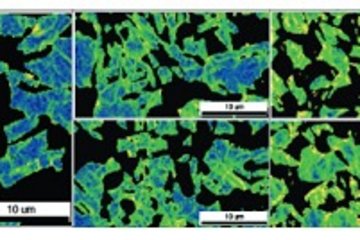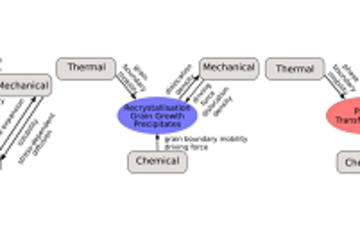All genres
61.
Talk
Structure-property relations in biological composite materials: An inspiration source for synthetic materials. 8th Indo-German Frontiers of Engineering Symposium 2016, Alexander von Humboldt Foundation, Potsdam, Germany (2016)
62.
Talk
Broadband reflecting fibers with tailored structures inspired by desert ants. SPP 1839 Kick-off and Networking Meeting, Wilhelm-Conrad-Roentgen Campus (Bessy II), Berlin, Germany (2016)
63.
Talk
Photonische Strukturen in der Natur: Wie Lebewesen Licht manipulieren. Meilensteintreffen - BMBF Nachwuchsgruppe morPHOx, Universität Paderborn, Paderborn, Germany (2015)
64.
Talk
Structure-property relations in biological composite materials: An inspiration source for synthetic materials. 79th Annual Meeting of the DPG and DPG Spring Meeting 2015, Berlin, Germany (2015)
65.
Talk
Alternative Präparationsmethoden für nichtmetallische Werkstoffe. Fachtagung Mikroskopie und Präparation (mikpräp) der Gesellschaft für Materialografie Rhein Ruhr e.V. (gmr2), Solingen, Germany (2015)
66.
Talk
Small-scale structure-property relations in structurally graded biological materials. Nanobrücken 2015, A Nanomechanical Testing Workshop & Hysitron User Meeting, Potsdam, Germany (2015)
67.
Talk
Structure-property relations in biological composite materials – The arthropod exoskeleton. Chemical Engineering and Materials Science Seminar, Michigan State University, East Lensing, MI, USA (2014)
68.
Talk
Structure-property Relations in the Arthropod Exoskeleton, a Multifunctional Biological Composite. Materials Science & Technology (MS&T) 2014, Pittsburgh, PA, USA (2014)
69.
Talk
Synthetic dental composite materials inspired by shark teeth. Annual Meeting of the Canadian Biomaterials Society, Halifax, Nova Scotia, Canada (2014)
70.
Talk
Fossilized shark teeth versus their recent counterparts: An in-depth comparison. DGM Bio-inspired Materials: International Conference on Biological Material Science, Potsdam, Germany (2014)
71.
Talk
Synthetic dental composite materials inspired by the hierarchical organization of shark tooth enameloid. Third winter school within the DFG priority programme 1420 "Biomimetic Materials Research: Functionality by Hierarchical Structuring of Materials", Potsdam, Germany (2014)
72.
Talk
Varying mechanical properties within the incisive cuticle of the terrestrial isopod Porcellio scaber resulting from region-dependent ultrastructure, elemental distribution and arrangement of calcite crystals. DGM Bio-inspired Materials: International Conference on Biological Material Science, Potsdam, Germany (2014)
73.
Talk
Structure-property relations in biological composite materials. Seminar, Department of Earth- and Environmental Sciences, LMU Munich, München, Germany (2014)
74.
Talk
Biological Photonic Structures. Keynote at the Kick-Off meeting of the DFG SPP1839, Wilhelm-Conrad-Roentgen Campus (Bessy II), Berlin, Germany (2014)
75.
Talk
Correlation of composition and structure of shark teeth. 23rd Biomaterials in Medicine and Veterinary Medicine Conference, Rytro, Poland (2014)
76.
Talk
Synthetic dental composite materials inspired by the hierarchical organization of shark tooth enameloid. MRS Fall Meeting 2013, Boston, MA, USA (2013)
77.
Talk
Structure-property relations and fracture behavior of shark tooth enameloid. MRS FAll Meeting 2013, Boston, MA, USA (2013)
78.
Talk
Synthetic dental fluoroapatite/polymer-composite materials inspired by the hierarchical organization of shark tooth enameloid. 12th International Symposium on Biomineralization, Freiberg, Germany (2013)
79.
Talk
The structure and composition of crocodile teeth. 12th International Symposium on Biomineralization, Freiberg, Germany (2013)
80.
Talk
Influence of Near-Physiological Salines and Organic Matrix Proteins from Sternal ACC-Deposits of Porcellio scaber on CaCO3 Precipitation. 12th International Symposium on Biomineralization, Freiberg, Germany (2013)











